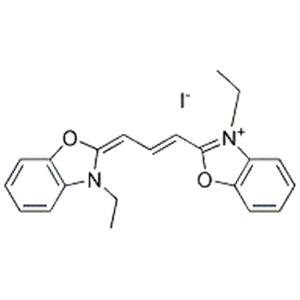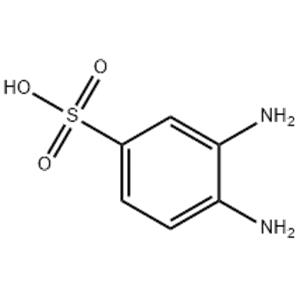
Ginsenoside Rb1 NEW
| Price | $34 | $1.4 |
| Package | 1kg | 1000kg |
| Min. Order: | 1kg |
| Supply Ability: | g-kg-tons, free sample is available |
| Update Time: | 2024-03-26 |
Product Details
| Product Name: Ginsenoside Rb1 | CAS No.: 41753-43-9 |
| Min. Order: 1kg | Purity: 99% |
| Supply Ability: g-kg-tons, free sample is available | Release date: 2024/03/26 |
| Lead time: In stock, ready for shipment | Packa: bag/bottle/drum/IBC |
| Delivery: By express, by air, by sea | Origin: Manufacturer, advantage product |
| COA, MSDS: Available, contact us for details | Name: Mia |
1. Materials information
| Name | ginsenoside Rb1 |
|---|---|
| Synonym | More Synonyms |
| Description | Ginsenoside Rb1, a main constituent of the root of Panax ginseng, inhibits Na+, K+-ATPase activity with an IC50 of 6.3±1.0 μM. Ginsenoside also inhibits IRAK-1 activation and phosphorylation of NF-κB p65 . |
|---|---|
| Related Catalog | Signaling Pathways >> Autophagy >> Autophagy Signaling Pathways >> Immunology/Inflammation >> IRAK Signaling Pathways >> Protein Tyrosine Kinase/RTK >> IRAK Signaling Pathways >> Autophagy >> Mitophagy Signaling Pathways >> Membrane Transporter/Ion Channel >> Na+/K+ ATPase Research Areas >> Inflammation/Immunology Natural Products >> Terpenoids and Glycosides |
| Target | Na+, K+-ATPase:6.3 μM (IC50) IRAK-1 p65 Autophagy Mitophagy |
| In Vitro | Rat brain microsomal Na+, K+-ATPase activity is inhibited significantly and rapidly by Ginsenoside Rb1. The IC50 of Ginsenoside Rb1 for Na+,K+-ATPase is 6.3±1.0 μM. The inhibition is enhanced with increasing the concentration of Ginsenoside Rb1 or decreasing that of Na+ and K+. Kinetic analysis reveals that Ginsenoside is an uncompetitive inhibitor with respect to ATP[1].Ginsenoside Rb1 significantly inhibits the activation of interleukin-1 receptor-associated kinase-1 (IRAK-1), IKK-β, NF-κB, and MAP kinases (ERK, JNK, and p-38); however, interaction between LPS and Toll-like receptor-4, IRAK-4 activation and IRAK-2 activation are unaffected[2]. Ginsenoside Rb1 is an ingredient of a Chinese medicine Panax ginseng. Ginsenoside Rb1 is a major bioactive compound in the regulating pregnane X receptor (PXR)/NF-κB signaling. Ginsenoside Rb1 is the compound with potent anti-inflammatory activity in ginseng saponin extract (GSE). The concentration for Ginsenoside Rb1 (10 μM) is optimized from a preliminary study to ensure sufficient anti-inflammatory activity and without apparent cytotoxicity. Ginsenoside Rb1 significantly reduces TNF-α-induced upregulation of IL-1β and iNOS mRNA levels, and restores the mRNA levels of PXR and CYP3A4 in LS174T cells. TNF-α causes a significant reduction in PXR protein levels and increase in the ratio of phosphorylated to total NF-κB p65, both of which are significantly abrogated by Ginsenoside Rb1[3]. |
| In Vivo | Ginsenoside Rb1 at the both doses of 30?mg/kg and 60?mg/kg significantly attenuates the histological lung injury. Ginsenoside Rb1 at the dose of 30?mg/kg and 60?mg/kg both significantly attenuates the histological intestine injury[4]. Ginsenoside Rb1 (Rb1), an ingredient of a Chinese medicine Panax ginseng, has beneficial effects on mesentery microvascular hyperpermeability induced by Lipopolysaccharide (LPS) and the underlying mechanisms. In some rats, Ginsenoside Rb1 (5 mg/kg per hour) is administrated through the left jugular vein 30 min after LPS infusion. Ginsenoside Rb1 decreases caveolae number in endothelial cells of microvessels. Ginsenoside Rb1 ameliorates microvascular hyperpermeability after the onset of endotoxemia and improves intestinal edema through inhibiting caveolae formation and junction disruption, which is correlated to suppression of NF-κB and Src activation[5]. |
| Cell Assay | LS174T cells are seeded in cell imaging dish. After overnight incubation, cells are treated with GSE (100 μg/mL), Ginsenoside Rb1 (10 μM), or CK (10 μM) for 3 hours, followed by an additional incubation with or without TNF-α (20 ng/ml) for 6 hours. At the end of the incubation, cells are harvested and fixed with 4% paraformaldehyde solution at 20°C for 20 minutes. After washing in PBS, cells are permeabilized with 0.2% Triton X-100 in PBS at room temperature for 5 minutes. After incubation in blocking buffer containing 0.1% Triton X-100 and 5% bovine serum albumin, cells are incubated with rabbit NF-κB p65 antibody at 4°C overnight and then with Alexa Fluor 488-conjugated anti-rabbit IgG antibody at room temperature for 30 minutes in 1% bovine serum albumin in PBS. Fluorescence photographs are obtained using a Zeiss 710 confocal microscope[3]. |
| Animal Admin | Mice[4] Male C57BL/6 mice (9-12 weeks old; 17-22?g) are randomly allocated into eight groups (n=8 in each group): (1) Sham surgical preparation including isolation of the superior mesenteric artery (SMA) without occlusion is performed (Sham); (2) mice are subjected to II/R without treatment (II/R); (3) mice are subjected to II/R with treatment of normal saline 10 minutes before reperfusion (II/R+NS); (4), (5) mice are treated with 30?mg/kg (II/R+Rb1-30) or 60?mg/kg (II/R+Rb1-60) Ginsenoside Rb1, in which surgery is performed as in the II/R group with administration of the Ginsenoside Rb1 intraperitoneally 10 minutes before reperfusion; (6) mice are subjected to Sham surgery and treated with ATRA (ATRA+Sham), which is the inhibitor of Nrf2/ARE signaling pathway; (7) mice are subjected to II/R and treated with ATRA (ATRA+II/R); (8) mice are subjected to II/R and treated with ATRA and 60?mg/kg Ginsenoside Rb1 as group 5 (ATRA+II/R+Rb1-60). During the last two weeks before the operation, the mice in the group 6, 7, 8 receive ATRA i.p. daily at 10?mg/kg and fed on a vitamin A-deficient diet, and the mice in the other groups receive the equivalent volume of corn oil and fed on a control normal diet. Rats[5] Male Wistar rats weighing 200-250 g are used. The rats are randomly divided into four groups, 26 animals in each. After being anesthetized with urethane (2 g/kg body wt im), the left femoral vein and left jugular vein of the rat are cannulated. In the LPS group, LPS solution in saline is infused (5 mg/kg per hour) for 90 min via the left femoral vein. The vehicle, instead of LPS solution, is administrated in Sham and Ginsenoside Rb1 alone (Rb1, 5 mg/kg) groups. In the Rb1 posttreatment (LPS+Rb1) group, Ginsenoside Rb1 solution is infused continuously through the left jugular vein 30 min after LPS administration at the dose of 5 mg/kg. Ginsenoside Rb1 solution and the same volume of saline are infused in Ginsenoside Rb1 and Sham groups, respectively, without subsequent LPS administration. In a separate set of experiments, the rats are anesthetized with 2% penobarbital sodium (60 mg/kg body wt ip), and saline, LPS, and Ginsenoside Rb1. After recovery from anesthesia, the animals are allowed access to water and rodent chow, and survival rate is recorded over time until 4 days after LPS stimulation. |
| References | [1]. Cao J, et al. Inhibitory effects of ginsenoside Rg1 and Rb1 on rat brain microsomal Na+,K+-ATPase activity. Zhongguo Yao Li Xue Bao. 1990 Jan;11(1):10-4. [2]. Joh EH, et al. Ginsenoside Rb1 and its metabolite compound K inhibit IRAK-1 activation--the key step of inflammation. Biochem Pharmacol. 2011 Aug 1;82(3):278-86. [3]. Zhang J, et al. Ginsenosides Regulate PXR/NF-κB Signaling and Attenuate Dextran Sulfate Sodium-Induced Colitis. Drug Metab Dispos. 2015 Aug;43(8):1181-9. [4]. Jiang Y, et al. Ginsenoside Rb1 Treatment Attenuates Pulmonary Inflammatory Cytokine Release and Tissue Injury following Intestinal Ischemia Reperfusion Injury in Mice. Oxid Med Cell Longev. 2015;2015:843721. [5]. Zhang Y, et al. Ginsenoside Rb1 ameliorates lipopolysaccharide-induced albumin leakage from rat mesenteric venules by intervening in both trans- and paracellular pathway. Am J Physiol Gastrointest Liver Physiol. 2014 Feb 15;306(4):G289-300. |
| Density | 1.4±0.1 g/cm3 |
|---|---|
| Boiling Point | 1145.9±65.0 °C at 760 mmHg |
| Molecular Formula | C54H92O23 |
| Molecular Weight | 1109.295 |
| Flash Point | 646.8±34.3 °C |
| Exact Mass | 1108.602905 |
| PSA | 377.29000 |
| LogP | 2.90 |
| Vapour Pressure | 0.0±0.6 mmHg at 25°C |
| Index of Refraction | 1.626 |
| Storage condition | 2-8°C |
2. Packaging of materials
For powders: normal is 25kgs/Drum or bag, or larger/smaller package as request.
For liquids: normal 25kgs/drum, 180-300kgs/bucket, or IBC, determined by the nature of the product.
Or smaller package 1kg/bottle, 10kgs/bottle as request.


3. Shipping & Delivery
By Express
Provide door to door service
Suitable for goods under 50kg
Delivery: 3-7 days
Cost: low cost

By Air
Provide airport to airport service
Suitable for goods over 50kg
Delivery: 3-14 days
Cost: high cost

By Sea
Provide seaport to seaport service
Suitable for goods over 100kg
Delivery: 2-45 days
Cost: low cost

4. Contact information
For more details, pls contact us freely.
Email address: mia@fdachem.com
Mob: 86 18336764634
WhatsApp/Skype/Wechat/LINE: 86 18336764634
Company Profile Introduction
You may like
Recommended supplier
| Product name | Price | Suppliers | Update time | |
|---|---|---|---|---|
| $150.00/1kg |
VIP1Y
|
Hebei Zhuanglai Chemical Trading Co Ltd
|
2024-12-09 | |
| $0.00/1kg |
VIP1Y
|
BINBO BIOLOGICAL CO.,LTD
|
2024-12-02 | |
| $39.00/5mg |
VIP5Y
|
TargetMol Chemicals Inc.
|
2024-11-19 | |
| $0.00/1kg |
VIP1Y
|
Shaanxi Cuikang Pharmaceutical Technology Co., Ltd
|
2024-03-14 | |
| $0.00/25kg |
Shaanxi Haibo Biotechnology Co., Ltd
|
2023-08-21 | ||
| $0.00/25kg |
Jiangsu Boquan Biotechnology Co., Ltd.
|
2023-02-13 | ||
| $0.00/20MG |
VIP3Y
|
Changsha Staherb Natural Ingredients Co., Ltd.
|
2022-09-14 | |
| $15.00/1KG |
Zhuozhou Wenxi import and Export Co., Ltd
|
2021-07-10 | ||
| $185.00/1g |
Nanjing Sky Hope Tongyuan Biological Engineering Co., Ltd.
|
2020-07-13 | ||
| $1515.00/1KG |
NanJing Spring & Autumn Biological Engineering CO., LTD.
|
2020-03-04 |
- Since: 2023-02-10
- Address: Room 01, 2288 E05, Building 14, East Henan University, Science and Technology Park, 279 Xisanhuan Ro








 China
China